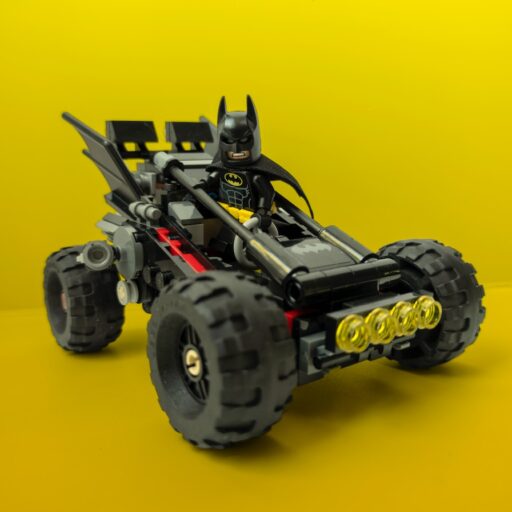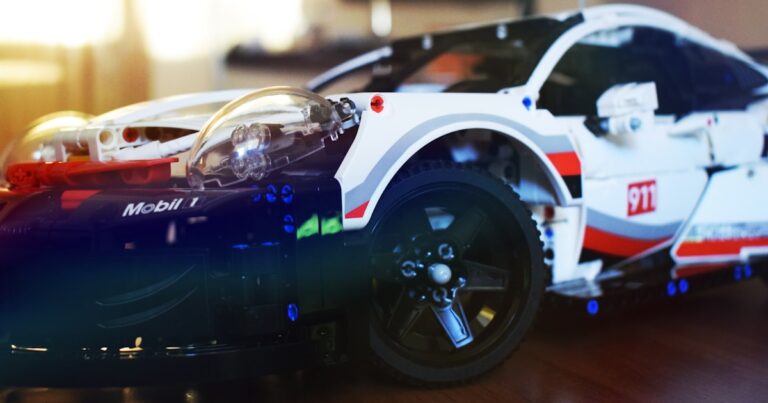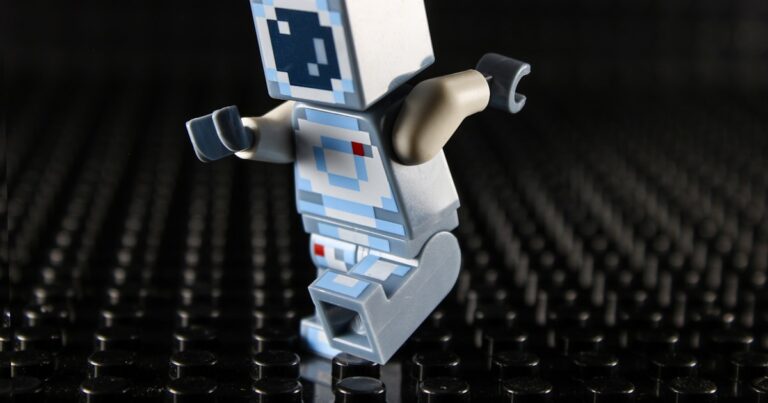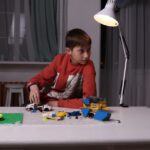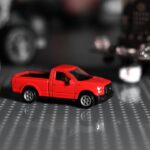Support our educational content for free when you purchase through links on our site. Learn more
Are Building Blocks and Construction Toys Good for Cognitive Development? 🧠 (2025)
Have you ever watched a toddler’s eyes light up as they stack one colorful block on top of another, only to gleefully knock it down and start again? It’s not just adorable play — it’s a powerful workout for their developing brain! At Toy Brands™, we’ve seen how building blocks and construction toys do more than entertain; they actively shape a child’s cognitive skills, from spatial reasoning to problem-solving and creativity. Curious how these simple toys pack such a developmental punch? Stick around — we’ll reveal the 5 key ways block play turbocharges young minds, plus our top brand picks that make learning irresistible.
Did you know that children who regularly engage in block play tend to perform better in STEM subjects later on? According to a study by the National Institutes of Health, spatial skills developed through block building are strongly linked to success in math and science. But which toys deliver the best bang for your buck? And how can parents maximize the benefits? We’ve got you covered with expert insights, safety tips, and creative play ideas that turn every block session into a brain-boosting adventure.
Key Takeaways
- Building blocks enhance critical cognitive skills including spatial awareness, problem-solving, and creativity.
- Parental involvement and guided play amplify learning outcomes.
- Top brands like LEGO®, Magna-Tiles®, Mega Bloks®, and K’NEX® offer age-appropriate options that grow with your child.
- Block play supports fine motor skills, language development, and social interaction — a holistic boost for early childhood.
- Safety matters: choose blocks suitable for your child’s age and supervise play, especially with small pieces.
Ready to build your child’s brain one block at a time? Explore our favorite picks and expert tips in the Building Blocks and Sets category at Toy Brands™.
👉 Shop top construction toys:
- LEGO® Building Sets on Amazon | Walmart | LEGO Official Site
- Magna-Tiles® on Amazon | Walmart | Magna-Tiles Official Site
- Mega Bloks® on Amazon | Walmart | Mega Bloks Official Site
Table of Contents
- ⚡️ Quick Tips and Facts About Building Blocks and Cognitive Development
- 🏗️ The Fascinating History and Evolution of Construction Toys
- 🧠 How Building Blocks Boost Your Child’s Brain Power
- 🔍 What Science Says: Research-Backed Benefits of Block Play
- 🧩 Top Construction Toy Brands That Support Cognitive Growth
- 👪 How Parents and Educators Can Maximize Learning Through Block Play
- 🎯 Choosing the Right Building Blocks for Your Child’s Age and Development
- 🛡️ Safety Tips and Precautions When Using Construction Toys
- 💡 Creative Block Play Ideas to Spark Cognitive Growth
- 🤔 Common Questions About Building Blocks and Cognitive Development
- 🎉 Conclusion: Why Building Blocks Are a Must-Have for Growing Minds
- 🔗 Recommended Links for Further Exploration
- ❓ Frequently Asked Questions (FAQ)
- 📚 Reference Links and Scientific Sources
⚡️ Quick Tips and Facts About Building Blocks and Cognitive Development
Welcome to the magical world where building blocks and construction toys are not just fun but brain-boosting superheroes! At Toy Brands™, we’ve seen firsthand how these simple toys transform curious toddlers into little architects and problem solvers. Before diving deep, here are some quick facts to get you excited:
- ✅ Building blocks enhance spatial reasoning, a key skill for STEM success. (Source: NIH Study)
- ✅ Blocks promote problem-solving, creativity, and fine motor skills simultaneously.
- ✅ Playing with blocks encourages language development through storytelling and collaboration.
- ✅ Blocks help children grasp mathematical concepts like symmetry, measurement, and balance.
- ✅ Parental involvement during block play boosts cognitive gains even more.
- ❌ Not all blocks are created equal — size, texture, and complexity matter for age appropriateness.
- ❌ Without supervision, small blocks can be a choking hazard for younger kids.
Curious how these facts translate into real-world benefits? Stick with us as we unpack the science, the brands, and the best ways to play for maximum brainpower! And if you want a quick visual intro, check out the engaging video on toddler construction toys here.
🏗️ The Fascinating History and Evolution of Construction Toys
Did you know that building blocks have been around for centuries? The journey from simple wooden cubes to high-tech magnetic tiles is a story of innovation and childhood joy.
- Early Beginnings: The first known wooden blocks date back to the 17th century, designed to teach children basic shapes and balance.
- Caroline Pratt’s Unit Blocks (1913): These standardized wooden blocks revolutionized early education by encouraging open-ended play. Pratt believed blocks were “building blocks” for success in life.
- Plastic Revolution: In the mid-20th century, brands like LEGO® introduced interlocking bricks, adding complexity and endless possibilities.
- Magnetic and Electronic Blocks: Modern toys like Magna-Tiles® and programmable blocks combine tactile play with STEM learning.
This evolution reflects a growing understanding that block play is not just fun but foundational for cognitive development. The diversity of blocks today means there’s something for every age and learning style.
🧠 How Building Blocks Boost Your Child’s Brain Power
Building blocks are like little gyms for the brain. Let’s break down the key cognitive benefits:
1. Enhancing Spatial Awareness and Visual Perception
Spatial skills help kids understand how objects relate in space — think puzzles, maps, or even packing a backpack.
- Blocks teach kids to visualize shapes and their positions.
- Manipulating blocks improves mental rotation, a skill linked to success in math and engineering.
- Parents can boost this by asking questions like, “Where should this block go to make it stable?”
2. Developing Problem-Solving and Critical Thinking Skills
Every block tower is a mini engineering challenge!
- Kids learn to plan, test, and modify their designs.
- They encounter problems like balance and stability, prompting creative solutions.
- This trial-and-error process builds resilience and flexible thinking.
3. Encouraging Creativity and Imagination
Blocks are blank canvases for young minds.
- Children invent stories and scenarios around their creations.
- Collaborative block play sparks shared creativity and communication.
- Blocks combined with props (like toy figures or cars) expand imaginative play.
4. Improving Fine Motor Skills and Hand-Eye Coordination
Handling blocks requires precision.
- Picking up, stacking, and aligning blocks strengthen finger dexterity.
- These skills are essential for writing, buttoning clothes, and other daily tasks.
5. Promoting Language Development and Social Skills
Block play is often a social activity.
- Kids describe their structures, negotiate roles, and share ideas.
- This interaction builds vocabulary and conversational skills.
- Dual language learners especially benefit from expressing ideas non-verbally and verbally.
🔍 What Science Says: Research-Backed Benefits of Block Play
We love stories, but science seals the deal. According to a National Institutes of Health study, block play is strongly linked to spatial cognitive skills foundational for STEM learning. The study highlights:
- Children who engage in block building show improved mental rotation and spatial relations.
- Parent-child block building sessions with hands-on guidance boost children’s spatial language and skills.
- Ethnic and cultural differences affect how parents interact during block play, influencing outcomes.
- Visual, hands-on guidance during block building is more effective than verbal instruction alone.
Another gem from the Kansas Inservice Training System stresses that block play supports holistic development, including math, science, creativity, and social-emotional skills. They emphasize that successful block play requires a safe, well-organized space and adult facilitation.
At Toy Brands™, we see these findings reflected in our families’ experiences: kids who play regularly with blocks tend to be more confident problem solvers and communicators.
🧩 Top Construction Toy Brands That Support Cognitive Growth
Now, let’s get down to the fun part: which building blocks are worth your shelf space? We’ve rated the top brands on a 1-10 scale across Design, Functionality, Educational Value, Safety, and Durability.
| Brand | Design | Functionality | Educational Value | Safety | Durability | Overall |
|---|---|---|---|---|---|---|
| LEGO® | 10 | 10 | 9 | 9 | 10 | 9.6 |
| Mega Bloks® | 8 | 8 | 7 | 10 | 8 | 8.2 |
| Magna-Tiles® | 9 | 9 | 10 | 9 | 9 | 9.2 |
| K’NEX® | 8 | 9 | 9 | 8 | 8 | 8.4 |
LEGO®: The Classic Brain Builder
- Design: Iconic interlocking bricks with endless combinations.
- Functionality: Supports everything from simple towers to complex robotics (LEGO Mindstorms).
- Educational Value: Great for spatial skills, creativity, and STEM learning.
- Safety: Non-toxic, meets strict safety standards.
- Durability: Bricks last for decades, often passed down generations.
Parents’ Take: “Our kids started with Duplo and graduated to classic LEGO. It’s amazing how their problem-solving skills grew!” — Sarah, mom of two.
👉 CHECK PRICE on:
Mega Bloks®: Big Blocks for Little Hands
- Design: Larger blocks perfect for toddlers.
- Functionality: Easy to grasp, stack, and build.
- Educational Value: Encourages early motor skills and spatial awareness.
- Safety: Rounded edges, BPA-free.
- Durability: Good, though less sturdy than LEGO.
Parents’ Take: “Perfect for my 18-month-old. She loves stacking and knocking them down!” — Mike, dad of toddler.
👉 Shop Mega Bloks on:
Magna-Tiles®: Magnetic Fun Meets Learning
- Design: Colorful magnetic tiles that snap together.
- Functionality: Builds 2D and 3D structures with ease.
- Educational Value: Excellent for geometry, magnetism concepts, and creativity.
- Safety: Strong magnets safely enclosed.
- Durability: High-quality plastic, long-lasting.
Parents’ Take: “My kids are fascinated by the magnets. It’s a whole new dimension of play!” — Lisa, early childhood educator.
👉 Shop Magna-Tiles on:
K’NEX®: Engineering Skills in Action
- Design: Rods and connectors for building complex models.
- Functionality: Encourages engineering thinking and fine motor skills.
- Educational Value: Great for older kids interested in mechanics.
- Safety: Small parts, recommended for ages 5+.
- Durability: Sturdy plastic components.
Parents’ Take: “My 7-year-old loves building moving machines. It’s like a mini engineering lab!” — Tom, dad and engineer.
👉 Shop K’NEX on:
👪 How Parents and Educators Can Maximize Learning Through Block Play
Building blocks are powerful, but the magic multiplies when adults get involved. Here’s how you can boost your child’s cognitive development during block time:
- Ask Open-Ended Questions: “What will you build next?” or “How can you make it taller without falling?”
- Use Spatial Language: Words like “under,” “beside,” “over,” and “between” help kids grasp spatial concepts.
- Encourage Storytelling: Invite your child to tell a story about their creation.
- Play Together: Joint building sessions foster social skills and language development.
- Provide Time and Space: Block play needs uninterrupted time and a dedicated area.
- Introduce Challenges: Suggest building a bridge or a house to spark problem-solving.
Our Toy Brands™ parents report that these strategies turn simple play into rich learning experiences. Plus, it’s a great way to bond!
🎯 Choosing the Right Building Blocks for Your Child’s Age and Development
Not all blocks fit all kids. Here’s a handy guide:
| Age Group | Recommended Blocks | Key Features | Development Focus |
|---|---|---|---|
| 1-3 years | Mega Bloks®, Duplo® | Large, easy to grasp, safe | Motor skills, basic stacking |
| 3-5 years | LEGO Classic, Wooden Unit Blocks | Medium size, varied shapes | Creativity, spatial reasoning |
| 5-8 years | LEGO Technic, K’NEX® | Complex connectors, small parts | Engineering, problem-solving |
| 8+ years | LEGO Mindstorms, Advanced K’NEX® Sets | Robotics, programmable elements | STEM, coding, critical thinking |
Tip: Always check for choking hazards and age recommendations on packaging.
🛡️ Safety Tips and Precautions When Using Construction Toys
Safety first! Here are some essentials:
- ✅ Choose age-appropriate blocks to avoid choking risks.
- ✅ Supervise toddlers during play, especially with small pieces.
- ✅ Inspect blocks regularly for cracks or broken parts.
- ✅ Store blocks in labeled bins to avoid tripping hazards.
- ✅ Teach kids to clean up after play to prevent accidents.
At Toy Brands™, we recommend investing in non-toxic, BPA-free materials and blocks that meet ASTM or EN71 safety standards.
💡 Creative Block Play Ideas to Spark Cognitive Growth
Ready to level up your block play? Try these ideas:
- Build a Storybook Scene: Use blocks and figures to recreate a favorite story.
- Shape Challenges: Ask your child to build a triangle, square, or circle structure.
- Bridge Building Contest: Who can build the sturdiest bridge?
- Color Sorting: Sort blocks by color before building.
- Math Games: Count blocks, compare heights, or create symmetrical patterns.
These activities keep play fresh and deepen learning. Plus, they’re perfect for group play or solo fun!
🤔 Common Questions About Building Blocks and Cognitive Development
Q: How long should my child play with blocks daily?
A: Even 15-30 minutes of focused block play daily can boost cognitive skills significantly.
Q: Can block play help kids with learning disabilities?
A: Absolutely! Blocks offer tactile and visual learning opportunities that can support diverse learners.
Q: Are digital or electronic building toys better than traditional blocks?
A: Both have merits. Traditional blocks excel in tactile and spatial skills, while electronic sets (like LEGO Mindstorms) introduce coding and robotics. Check out our STEM Toys for more options.
Q: How do I encourage my child if they get frustrated?
A: Celebrate small successes and remind them that mistakes are part of learning. Sometimes stepping away and returning later helps.
🎉 Conclusion: Why Building Blocks Are a Must-Have for Growing Minds
After our deep dive into the world of building blocks and construction toys, it’s crystal clear: these timeless toys are powerhouses for cognitive development. From boosting spatial reasoning and problem-solving skills to nurturing creativity and social interaction, blocks offer a rich, multi-dimensional learning experience that no screen can fully replicate.
Our exploration of top brands like LEGO®, Mega Bloks®, Magna-Tiles®, and K’NEX® revealed that while each has unique strengths, they all share a common goal—empowering kids to think, create, and grow. Whether it’s the classic interlocking bricks of LEGO® that inspire engineering feats or the magnetic magic of Magna-Tiles® that open up new geometric worlds, there’s a perfect fit for every child’s age and interest.
Positives across the board:
- Stimulate critical cognitive skills foundational for STEM.
- Encourage hands-on, open-ended play.
- Foster social skills and language development.
- Offer safe, durable, and age-appropriate options.
Some considerations:
- Small parts require supervision for younger children.
- Complexity should match developmental stage to avoid frustration.
- Parental involvement enhances benefits significantly.
So, if you’ve ever wondered whether building blocks are “just toys” or true brain boosters, the answer is a resounding YES! They are essential tools for nurturing curious, confident, and capable young minds. Ready to build your child’s future one block at a time? Let’s get stacking!
🔗 Recommended Links for Further Exploration
👉 Shop Building Blocks and Construction Toys:
- LEGO® Building Sets: Amazon | Walmart | LEGO Official Website
- Mega Bloks®: Amazon | Walmart | Mega Bloks Official Website
- Magna-Tiles®: Amazon | Walmart | Magna-Tiles Official Website
- K’NEX®: Amazon | Walmart | K’NEX Official Website
Recommended Books on Building Blocks and Child Development:
- Block Building for Young Children: Learning in a Visual World by Marjorie Frank (Amazon)
- Play = Learning: How Play Motivates and Enhances Children’s Cognitive and Social-Emotional Growth by Dorothy Singer et al. (Amazon)
- The Power of Play: Learning What Comes Naturally by David Elkind (Amazon)
❓ Frequently Asked Questions (FAQ)
How do building blocks enhance a child’s problem-solving skills?
Building blocks create a hands-on environment where children face real challenges like balancing, fitting pieces, and designing stable structures. This trial-and-error process encourages them to plan, test, and adjust their strategies, fostering flexible thinking and persistence. According to the National Association for the Education of Young Children, children develop intentional problem-solving by asking themselves questions like “How do I make this taller without it falling?” This active engagement builds critical thinking skills transferable to academic and life challenges.
What cognitive benefits do construction toys offer to toddlers?
Toddlers benefit from construction toys by developing fine motor skills, hand-eye coordination, and early spatial awareness. Larger blocks like Mega Bloks® are designed for small hands, helping toddlers practice grasping and stacking safely. These early experiences lay the groundwork for more complex cognitive skills like pattern recognition and cause-effect understanding. The sensory experience of handling blocks also supports brain development through tactile stimulation.
Can playing with building blocks improve spatial awareness in children?
Absolutely! Spatial awareness—the ability to understand how objects relate in space—is one of the most significant benefits of block play. Manipulating blocks helps children develop mental rotation skills and an understanding of concepts like “over,” “under,” and “beside.” The NIH study (PMC6639782) highlights that these skills are foundational for success in STEM subjects. Parents can enhance this by using spatial language during play and encouraging children to build from pictures or instructions.
At what age should children start playing with construction toys for maximum development?
Children can start as early as 12 months with large, safe blocks like Mega Bloks® or Duplo®. As they grow, they can transition to smaller, more complex blocks around age 3-5, such as LEGO Classic sets. Early exposure supports motor skills and spatial reasoning, while older children benefit from engineering and problem-solving challenges. The key is to match the toy complexity to the child’s developmental stage to keep play engaging and frustration-free.
Are there specific toy brands known for educational building blocks?
Yes! Brands like LEGO®, Magna-Tiles®, Mega Bloks®, and K’NEX® are well-regarded for combining fun with educational value. LEGO® is famous for fostering creativity and STEM skills, Magna-Tiles® introduce geometry and magnetism, Mega Bloks® support early motor development, and K’NEX® encourages engineering thinking. These brands meet safety standards and offer sets tailored to different ages and learning goals.
How do construction toys support creativity and imagination in kids?
Construction toys provide open-ended play opportunities where children can invent stories, build imaginary worlds, and experiment with designs. Unlike toys with fixed outcomes, blocks can be combined in countless ways, sparking endless creativity. Collaborative play with peers or parents further enriches imagination through shared storytelling and role-playing. This freedom nurtures divergent thinking, a key component of creativity.
What role do building blocks play in developing fine motor skills?
Handling blocks requires precise finger movements, grasping, and coordination. These actions strengthen fine motor skills essential for writing, buttoning clothes, and other daily tasks. As children stack and align blocks, they practice hand-eye coordination and dexterity. Early block play with large pieces prepares toddlers for more intricate manipulations with smaller blocks as they grow.
📚 Reference Links and Scientific Sources
- Ten Things Children Learn from Block Play | NAEYC
- Block Building and Spatial Skills Study | NIH PMC6639782
- Benefits of Block Play | Kansas Inservice Training System
- LEGO Official Website
- Mega Bloks Official Website
- Magna-Tiles Official Website
- K’NEX Official Website
For more on educational and STEM toys, visit our Educational Toys and STEM Toys categories at Toy Brands™.
